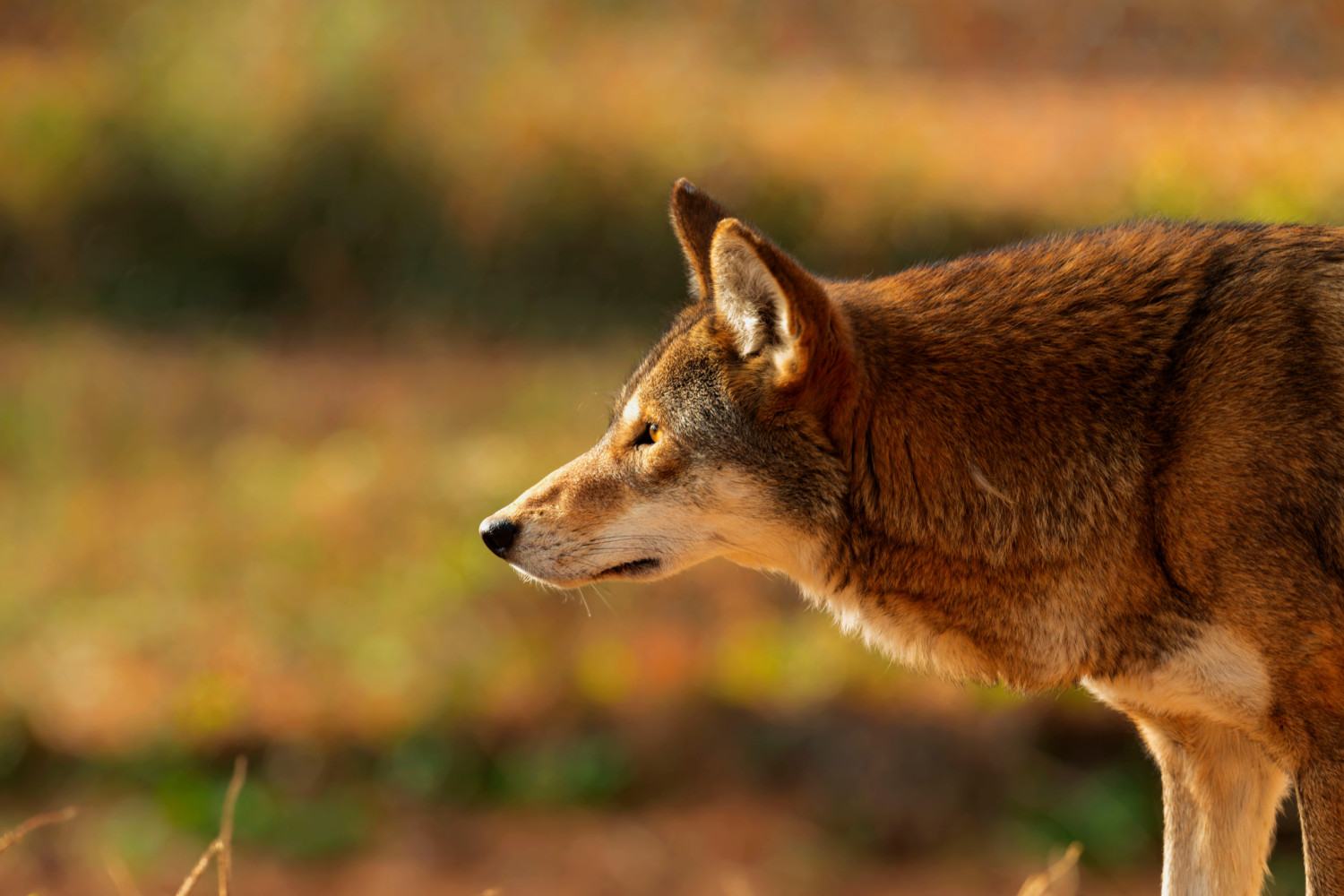Hope for an endangered species of wolves sprung up in April after advocates discovered the first litter of red wolf pups to be born in the wild in four years.
The Red Wolf Recovery Program posted on its Facebook page that a litter of four female and two male red wolf babies was found around April 18 in the Alligator River National Wildlife Refuge in the Outer Banks of North Carolina.
“As the sights and sounds of spring began to unfold on Alligator River NWR this April, something monumental was also unfolding on the landscape … a new litter of red wolf pups and renewed hope for survival of a species!” the Red Wolf Recovery Program posted.
The pups’ parents were a female and male wolf pairing “formed through the combination of several management actions and the two red wolves subsequently following their natural instincts in pairing, establishing their territory and mating.”
While a wild red wolf female received and fostered four captive-bred red wolf pups in 2021, none had been born to a wild pairing of red wolves outside of captivity since 2018, which is why this new litter of pups is so exciting!
“Every generation yields a new born hope for the red wolf…a cause for joy and celebration!” the account added, sharing photos of the new pups in their den.
While the dad red wolf was off hunting and the mom red wolf watched nearby, Red Wolf Recovery Program staff quickly checked the health of the pups, microchipped them, and swabbed their cheeks for genetic samples. The mother wolf came back to the den after the humans left.
The program also noted in a comment that in a year, if the young wolves can be captured to have orange identifying radio collars put on them, they will be vaccinated as well.
Red wolves are native to the U.S. and used to be found from New England down to the southeastern states and over to the Gulf Coast.
Efforts at captive breeding of red wolves date back to the 1970s when the species’ numbers were very low and limited to southeast Texas and southwest Louisiana. They were declared extinct in the wild in 1980. However, red wolves were released into eastern North Carolina and the Alligator River National Wildlife Refuge starting in 1987 and the wild red wolf population slowly began to grow.
Around 241 red wolves are living in Association of Zoos and Aquarium (AZA) facilities in the U.S. that participate in the red wolf Species Survival Plan. Thirty breeding pairs existed in 2020-2021 and 23 pups came out of six litters born in captivity from those pairings, according to the Red Wolf Recovery Program that’s a cooperative effort with the U.S Fish and Wildlife Service. In 2021-2022, there are 38 breeding pairs.

The wild population of red wolves in eastern North Carolina peaked at 120 in 2012 but dropped steeply after that year. Today, with the recent discovery, the count is closer to 15-17 red wolves in the wild.
The Alligator River refuge has 154,000 acres of unusual pocosin freshwater wetlands, or bogs, made of layers of peat with stubby shrubbery. They are home to not only this litter of red wolves but also animals like ducks, otters, alligators and black bears, plus native plant species.
In response to one commenter on the pups’ birth post about interbreeding with coyotes and attacks on humans, the Red Wolf Recovery Program wrote that its program works to prevent crossbreeding with coyotes but hybrid red wolf-coyote pups do happen.
“There has never been a documented incidence of an attack on humans by a red wolf, and documented cases of attacks on people by coyotes are rare,” the program posted. “Hybrids are no more aggressive toward people than either of the parent species.”
This story originally appeared on Simplemost. Checkout Simplemost for additional stories.


